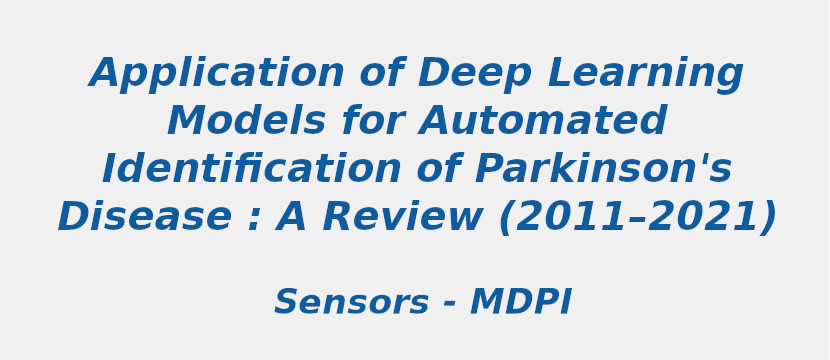Research Area: Machine Learning
Parkinson disease (PD) is the second most common neurodegenerative disorder affecting over 6 million people globally. Although there are symptomatic treatments that can increase the survivability of the disease, there are no curative treatments. The prevalence of PD and disability-adjusted life years continue to increase steadily, leading to a growing burden on patients, their families, society and the economy. Dopaminergic medications can significantly slow down the progression of PD when applied during the early stages. However, these treatments often become less effective with the disease progression. Early diagnosis of PD is crucial for immediate interventions so that the patients can remain self-sufficient for the longest period of time possible. Unfortunately, diagnoses are often late, due to factors such as a global shortage of neurologists skilled in early PD diagnosis. Computer-aided diagnostic (CAD) tools, based on artificial intelligence methods, that can perform automated diagnosis of PD, are gaining attention from healthcare services. In this review, we have identified 63 studies published between January 2011 and July 2021, that proposed deep learning models for an automated diagnosis of PD, using various types of modalities like brain analysis (SPECT, PET, MRI and EEG), and motion symptoms (gait, handwriting, speech and EMG). From these studies, we identify the best performing deep learning model reported for each modality and highlight the current limitations that are hindering the adoption of such CAD tools in healthcare. Finally, we propose new directions to further the studies on deep learning in the automated detection of PD, in the hopes of improving the utility, applicability and impact of such tools to improve early detection of PD globally.
Keywords:
Parkinson disease (PD)
Deep learning
Computer-aided diagnosis (CAD)
SPECT
PET
MRI
EEG
Gait
Handwriting
Speech
Author(s) Name: Hui Wen Loh, Wanrong Hong, Chui Ping Ooi
Journal name: Sensors
Conferrence name:
Publisher name: MDPI
DOI: 10.3390/s21217034
Volume Information: Volume 21
Paper Link: https://www.mdpi.com/1424-8220/21/21/7034
